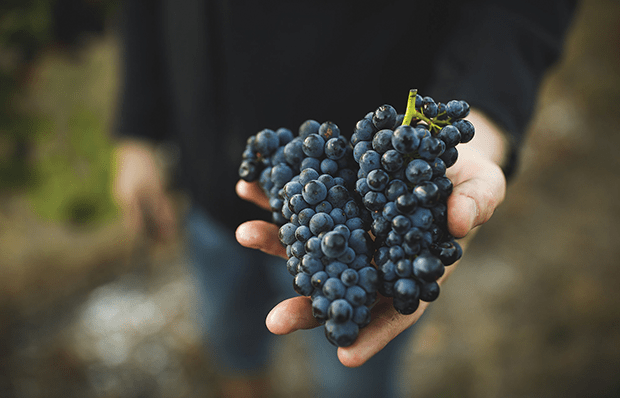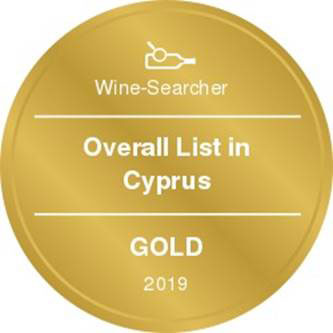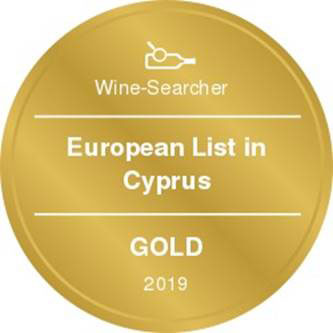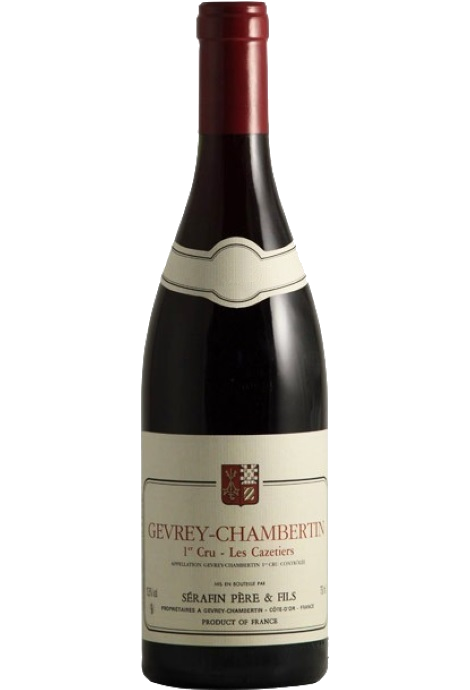Grape Varieties: Pinot Noir 100%
This is the fifth most highly rated Gevrey-Chambertin Les Cazetiers wine (based on critic scores): the 2018 vintage was given a score of 94 by The Wine Advocate and the 2008 vintage was given a score of 92 by Wine Spectator.
Tasting Notes: Bright red-ruby. Aromas and flavours of black cherry and liquorice are complicated by hints of game, leather and earth. Broad, sweet and pliant; in fact, finer-grained and more feminine than this wine normally are at this stage. Boasts terrific density of the material and finishes very long, with surprisingly suave tannins and enticing salty minerality.
Food Pairing: Enjoy with the finest beef, lamb or game you can afford.
This Domaine was originally put on the map by Christian Sérafin’s father, Stanilaus Sérafin, a Polish émigré, who settled in Burgundy before the war. He initially worked as a mason, before purchasing some land in 1947 and establishing himself as a vigneron. His son Christian inherited the Domaine in 1988, though he had been making the wine for the previous 20 years. Christian Sérafin is now past retirement age, but with a niece (Frédérique) in the vineyards and cuverie, and a daughter (Karine) in the office, continuity is in place. The style here is for powerful wines which age exceptionally well.
About Domaine Sérafin
Christian Sérafin is a widely respected producer held in high regard by Robert M. Parker Jr., the second generation of his family estate, Domaine Serafin, he produces formidable Burgundies that have won over numerous critics. Robert Parker, clearly an ardent fan, makes no effort to hide his admiration towards Sérafin:
“In a village of far too many underachievers, Christian Serafin stands out as one of the sure-handed winemakers. His wines have been remarkably consistent”
Sérafin’s estate includes vineyard holdings in Gevrey-Chambertin, Morey-St.-Denis, and Chambolle-Musigny. His prized Charmes-Chambertin Grand Cru plot occupies a mere 0.31 hectares with vines planted in 1946. Today, the estate is managed by Christian’s daughter Karine and niece Frédérique Goulley.

For orders below €100,00 delivery charge €10,00 within city limits

Pinot Noir is more susceptible than other varieties to over cropping - concentration and varietal character disappear rapidly if yields are excessive and yields as little as 25hl/ha are the norm for some climates of the Côte d`Or.
Because of the thinness of the skins, Pinot Noir wines are lighter in colour, body and tannins. However the best wines have grip, complexity and an intensity of fruit seldom found in wine from other grapes. Young Pinot Noir can smell almost sweet, redolent with freshly crushed raspberries, cherries and redcurrants. When mature, the best wines develop a sensuous, silky mouth feel with the fruit flavours deepening and gamey "sous-bois" nuances emerging.
The best examples are still found in Burgundy, although Pinot Noir`s key role in Champagne should not be forgotten. It is grown throughout the world with notable success in the Carneros and Russian River Valley districts of California, and the Martinborough and Central Otago regions of New Zealand.
 +357 25 76 06 08
+357 25 76 06 08














